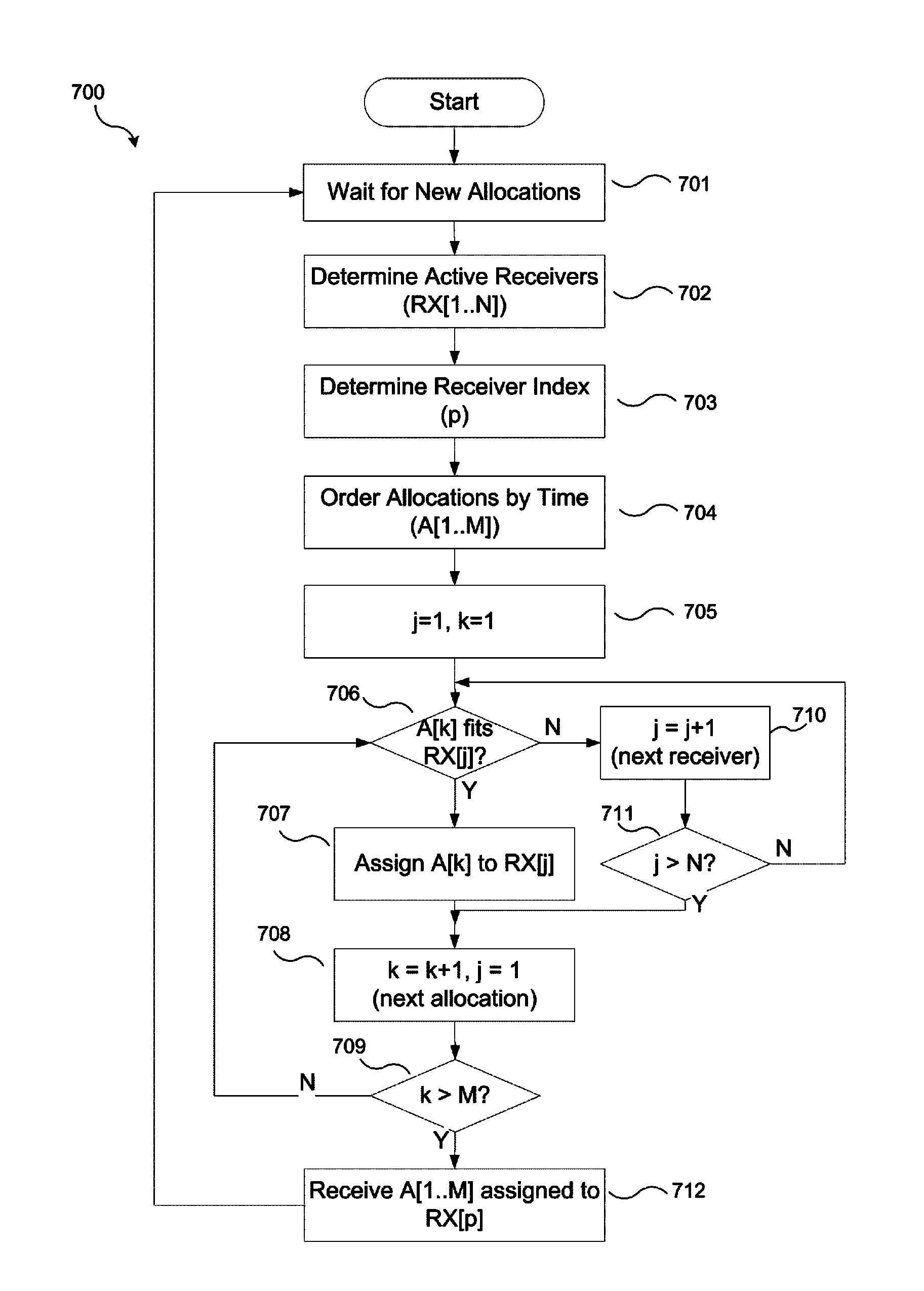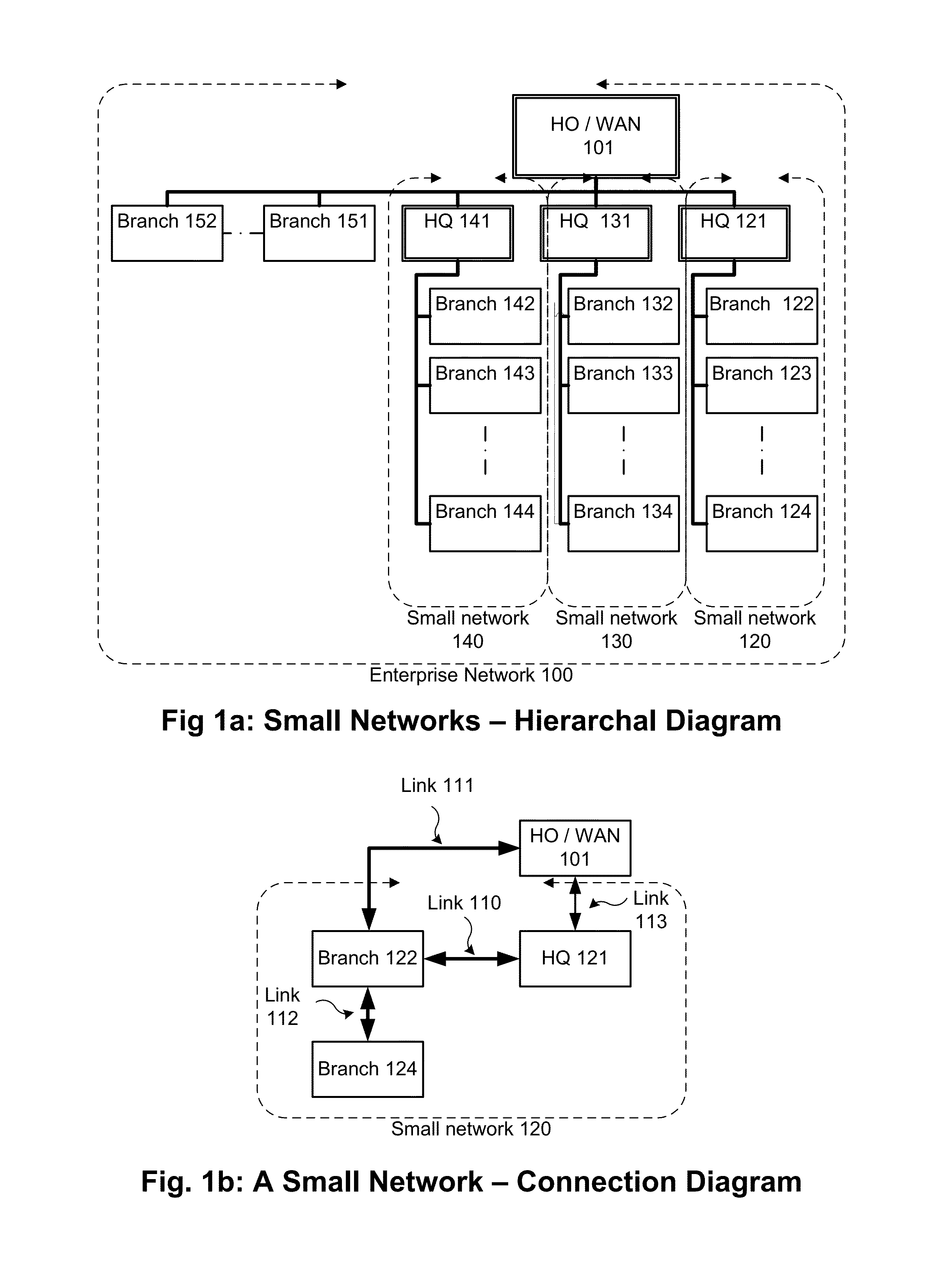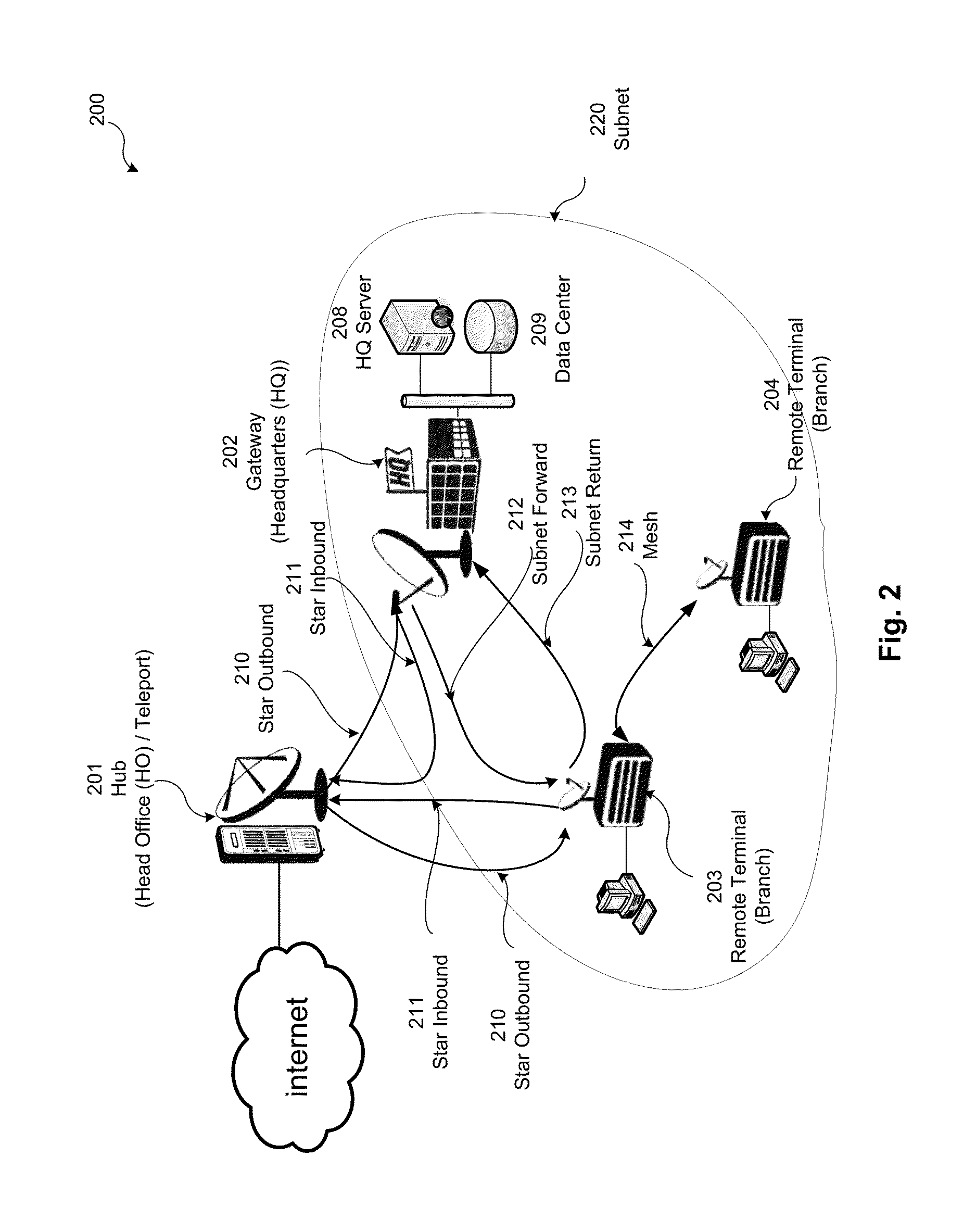Furthermore, in some parts of the world, lack of Internet infrastructure results in gateways to
the Internet (or to any other WAN) to be located very far from the corporate facilities, in some cases even in a different continent.
When attempting to apply DAMA techniques to a small-scale
satellite network (for example tens of remote terminals), wherein a considerable volume of traffic may be exchanged between remote sites, inherent limitations of the topology may lead to utilizing bandwidth less efficiently (and perhaps even to cost ineffectiveness).
The low number of terminals and a higher correlation between bandwidth requests from those remote terminals may render the statistical approach unjustified, resulting in less oversubscription (i.e. more bandwidth per remote terminal).
Furthermore, a relatively high volume of traffic sent from remote terminals (i.e. over return channels to a hub or to other remote terminals, e.g. in mesh topology) compared to the volume of traffic sent from a hub to remote terminals (e.g. over a forward channel) also negatively affects the bandwidth efficiency.
In addition, any overhead of management and control (hardware and bandwidth) may be divided between fewer users hence the overhead per user is higher.
Consequently, in terms of bits per Hz, a small-scale DAMA network may be much less efficient than a regular DAMA network.
A
network topology of small-scale networks using satellite access, for example like the one illustrated for example in FIG. 1a, poses several technological challenges, including the inherent latency over satellite links, the cost of equipment and operation of a
satellite network (e.g. bandwidth efficiency), operation simplicity (as operation of a
satellite network may require expertise not always existing in small organizations),
broadband requirements, availability requirements, user experience requirements and support of interactive applications (e.g. VoIP or video conferencing).
However, a VSAT network in star topology fails to meet several key requirements of the small-scale
network topology previously presented.
Since in the small-scale
network topology previously presented a considerable portion of the total traffic may be exchanged between remote sites (especially between branches and their headquarters), a star topology network may be much less efficient than usually expected for such networks.
In yet another aspect, any data exchanged between two VSATs is subjected to longer latency due to the additional satellite hop in each direction, hence user experience (e.g. for voice and video sessions) might be significantly compromised.
In a further aspect, installing a hub for a satellite network at an SME's
data center may require SME personal to operate the satellite network hence the operational simplicity requirement presented above is not satisfied as well.
Consequently a VSAT network in star topology, where the hub is located either at the HO or at the HQ, is an inadequate solution for a small-scale network topology as previously presented.
However, such embodiments often use static channel assignments hence the total bandwidth efficiency is limited (i.e. network operation costs are higher) and the task of managing the network (e.g. adding additional sites) may be more complicated (i.e. network operation might not be simple).
However, a VSAT network in fully meshed topology fails to meet several key requirement of the small-scale network topology previously presented.
Consequently, the entire solution may be cost ineffective and / or face regulatory obstacles due to
high transmission power.
Consequently a VSAT network in fully meshed topology is an inadequate solution for a small-scale network topology as previously presented.
However, a VSAT network in
hybrid topology fails to meet several key requirement of the small-scale network topology previously presented.
Therefore, a
hybrid topology may be inadequate for supporting a second data center at a location other than the hub, which is a key requirement in the small-scale network topology previously presented.
In yet another aspect, any attempt to increase the
throughput over mesh
connectivity may require a larger VSAT antenna and / or a more powerful (and expensive)
transmission equipment at least at one end of the mesh link.
Consequently a VSAT network in a
hybrid star and mesh topology is an inadequate solution for a small-scale network topology as previously presented.
An SCPC approach fails to meet several key requirement of the small-scale network topology previously presented.
In one aspect, perhaps some of the biggest disadvantages of this approach are its inherent bandwidth inefficiency while working with non-continuous traffic (e.g. as in the case of IP networks) and its rigidness and inflexibility from satellite resources point of view.
In another aspect, in a network containing more than very few sites, perhaps with one site being configured as a data center to which all the other sites may be connected and with requirements for
single hop connectivity between at least some of the other sites, the necessary equipment required for implementation of such a network may be cost-ineffective, as a dedicated
transceiver (
transmitter and
receiver) may be required for each link.
Although an MCPC approach may enable
time division multiplexing (TDM) of several data streams over a single carrier, this approach does not cure any of the other deficiencies previously presented with respect to the SCPC approach.
Consequently the SCPC approach is an inadequate solution for a small-scale network topology as previously presented.
 Login to View More
Login to View More  Login to View More
Login to View More 


